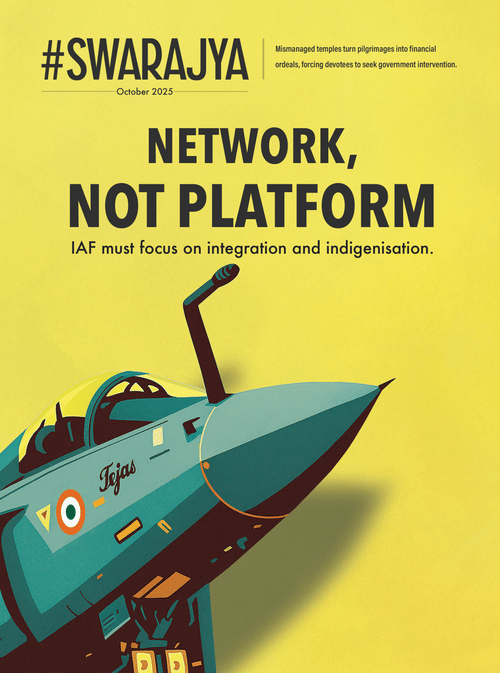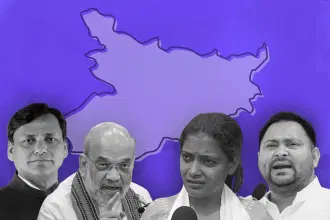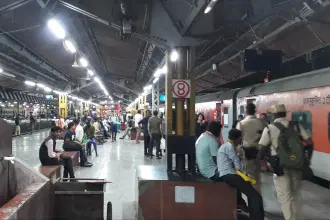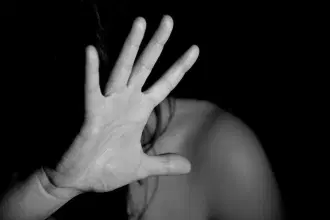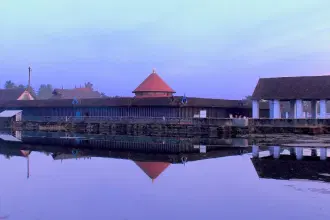Culture
Kolanji’s Hinduphobia Driven By Colonial Stereotypes: Vanathi Srinivasan
Aravindan Neelakandan
Jul 26, 2019, 04:38 PM | Updated 04:37 PM IST
Save & read from anywhere!
Bookmark stories for easy access on any device or the Swarajya app.
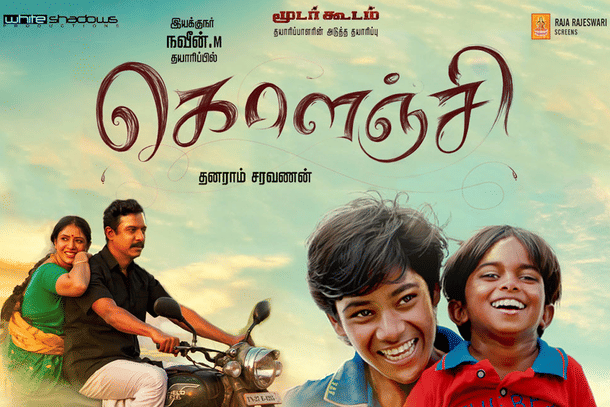
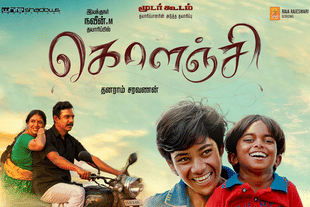
It has become customary in Tamil movies to attack Hinduism, Hindus and Hindu organisations, not to mention the central government.
In a trailer of the movie Kolanji, the dialogues spoken by actor Samudrakani — presumably for social justice — target Hinduism and have gone viral on social media.
Many Hindus are agitated over the dialogues.
In an exclusive interview to Kathir media, Vanathi Srinivasan, General Secretary of the Bharatiya Janata Party (BJP) in Tamil Nadu, answered questions regarding the movie’s trailer and other related issues.
Edited excerpts below:
Kathir Media (KM): In the trailer of the the movie Kolanji, due release on 26 July 2019, a dialogue states that Hindu deities in the temple are alien and came from the North. Are Hindu deities imports from the North?
Vanathi Srinivasan (VS): In the trailer of the movie, the person who acts as a socially-aware person, states that the deities in the temple are from the North and that the original deities here were relegated to the margins and borders outside our villages. He further alleges that only Brahmins can enter the sanctum of the temples.
All these are explicit lies. The movie dialogue uses colonial constructs and stereotypes which have been demolished by modern anthropological studies. So actually to use such outdated colonial frameworks and propagate them as truth is against the scientific temper that the Indian Constitution talks about.
KM: How do you say these are colonial views?
VS: It was only during the colonial times that this division between our deities — that some were from the North and others belonged to Tamil Nadu — was introduced. The colonial rule necessitated such a division. Even then, and in recent times too, great Tamil scholars and poets like Mahakavi Bharathi to Prof Mu Shanmugam Pillai had rejected such divisions.
Illango Adigal, the revered seer-poet who gave Chilapathikaram, in his epic, states that the tongues that do not sing the praise of Rama and Krishna, the eyes that do not see the beauty of Rama and Krishna, the ears that do not hear the glory of Rama and Krishna, are useless. Will the dialogue-writer also allege that Illango Adigal too was corrupted in his verses and the robes he wears, as the script-writer has alleged about ordinary Hindus?
A Sangam poet sees the Chola king, Perum Thirumaavalavan, and the Pandyan Peruvaluthi together and what does he sing? He sings that they both being united, look like the great gods Krishna and Balarama. Would the movie script-writer and the actor dare to call Puranaanooru tainted?
The point is that from time immemorial Tamil society and culture knew no such divisions as northern or southern deities. They saw all of India as one, culturally. These divisions were brought about only by colonialism.
KM: A dialogue states that the Dharma Sastras have segregated people, discriminating against them. What is your view?
VS: The actor says that Dharma Shastras discriminated against people. Actually, the Smritis are temporal laws which change and can be changed according to the time and place. But more important to the Hindus are the injunctions of the Upanishads, Alwars and Nayanmars. They not only do not discriminate; they advocate universal acceptance.
When Avaiyar, the poetess, stated that ‘There are only two jaatis – one that gives and another that hoards’ she had spoken against caste system without spewing venom or doing hate politics like EVR. To us Hindus, her words are equally Dharma Shastras.
Caring nothing about going to hell, for the salvation of all humanity, Sri Ramanuja proclaimed the “Divine Name” and gave it to all. Is there a greater act of equality that happened in Tamil Nadu, in comparison to that?
KM: In the movie a person who acts as a Brahmin priest is made to say that only Brahmins can go inside the temple’s sanctum sanctorum. Is it not true that only Brahmins are allowed inside the temple sanctum?
VS: Every temple has its own localised traditions. Based on that the priests are appointed by the local communities. And it is not Brahmin priests in all temples. In Irakankudi Mariamman temple or Thindukal Kottai Mariamman temple or in the Brahmashakti Amman temples of Kanyakumari who are the priests?
In the Iyyanar temples who are the priests? Even temples where Brahmins are priests no other Brahmins are allowed inside. Not even the Shankaracharyas. Only the Archaka can go inside.
In 2002, when Kanchi Shankaracharya visited the Veera Mahakaliamman temple, he stood outside the sanctum and offered worship as a Scheduled Community priest officiated the ceremony. The photos of the event were published in the then newspapers and they falsify the spurious arguments disseminated in the movies.
This being the truth, what the movie trailer shows is that still there are some people who are so filled with the colonial false propaganda and who disseminate such irrational, pseudo-scientific hate propaganda.
It is nothing but hate propaganda against a particular religion and community. Further it is wrong to attribute to EVR the entire social reform and renaissance that has happened in Tamil Nadu.
KM: Is worshipping of ‘small deities’ part of Hindutva?
VS: The worship of ‘small’ deities is an organic integral part of Akhand Hindutva. In fact, kula devata worship is part and parcel of our way of life. In fact, not only Brahmins but many communities share the same kula devata. It was the social reality then and it is the social reality now.
But those who are suddenly discovering the virtues of ‘small’ deities’ worship now, are strategically silent on proselytism that destroys this entire cultural heritage along with the worship of these deities.
What is the reason for this silence? Hindutva is respecting the diverse customs and heritages of all communities and living in harmony and mutual respect.
KM: Can there actually be two opinions that EVR was the one who spearheaded social liberation movements in Tamil Nadu?
VS: In every society at particular times when there is need for social change and progress, we always have social reformers who take the society forward. In Tamil Nadu there are many social and spiritual reformers who have contributed so much to the social emancipation and progress — beyond whatever is attributed to EVR.
Consider the list: Iyya Vaikundar in Kanyakumari district, the seer of Chidambaram Swami Sahajanada, Karma Veerar Kamaraj, who created the vast primary educational infrastructure for Tamil Nadu (who incidentally supported Hindi and three-language formula), Thiru C Subramaniam, who sowed the seeds for industrial revolution and green revolution in Tamil Nadu, Dr Muthulakshmi Reddy, who strove for women emancipation, the great Vedantic poet, Bharathi, who sang for the liberation of women, Swami Chidbavananda, who took education and the Gayatri Mantra to all sections of the people — the list is endless!
This is an English translation of the interview Vanathi Srinivasan gave to Kathir Media.
Aravindan is a contributing editor at Swarajya.
